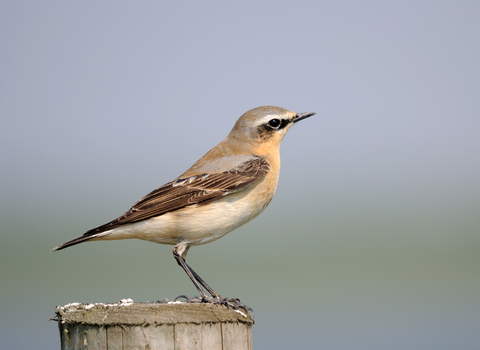
©Amy Lewis
Wheatear
A summer visitor, the wheatear is a handsome chat, with black cheeks, white eyestripes, a blue back and a pale orange chest. Look for it on upland heaths and moors.
Enw gwyddonol
Oenanthe oenanthePryd i'w gweld
March to OctoberTop facts
Stats
Length: 15-16cmWingspan: 29cm
Weight: 24g
Average lifespan: 2 years
Classified in the UK as Amber under the Birds of Conservation Concern 5: the Red List for Birds (2021). Protected in the UK under the Wildlife and Countryside Act, 1981.
